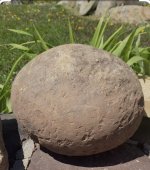eboy1960
Sr. Member
hello,does anyone have a good idea how long most small items found like rings pendants or other unmarked items take to get 5-6 inches in the ground,can depth show an tell us the number of years or months,its been there? can a nice silver or gold ring be a few inches deep be 40-50yrs there? thanks for your input,





